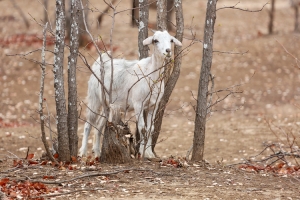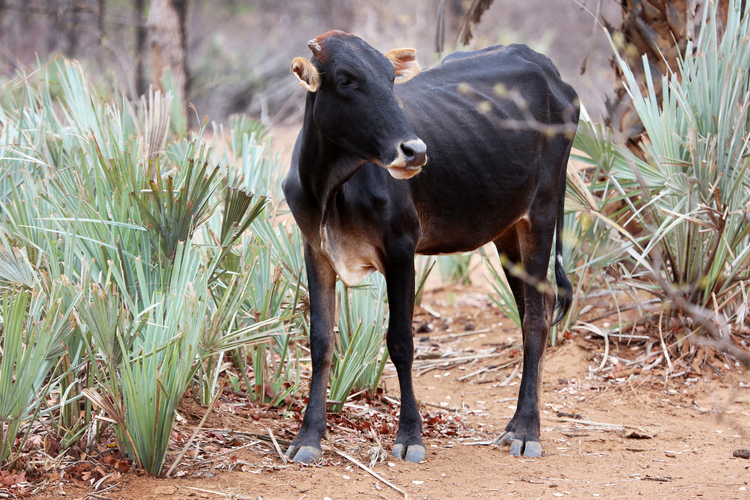
The Sunday Mail

Lawson Madzivanyika
THE El Nino weather phenomenon has come and gone, leaving a trail of destruction in agro-based economies of Southern Africa.
El Nino is a weather pattern that is associated with a sustained period of warming up in the central and eastern tropical Pacific which can spark deadly and costly climate extremes in parts of the world.
The end of El Nino might sound as good news to farmers but the damage it has caused to soil fertility and loss of livestock may be greater and can last for decades, causing problems for farmers in the future.
Professor Paul Mapfumo, regional co-ordinator for Soil Fertility Consortium (Sofecsca) said the change in weather patterns calls for farmers, both small and commercial, to change their farming methods to mitigate food shortages in case of droughts.

“This is not the last drought to hit the nation, there will be more to follow. While individual soils react differently to weather changes, there are some general principles that can help when coming out of a prolonged drought,” said the professor.
“The El Niño of 1997-1998 was the worst in modern records for Zimbabwe as it devastated crop yields and killed livestock, forcing some people to leave their families behind in search of a more reliable income,” said Prof Mapfumo.
Farmers need to adapt to technologies that come through integrated soil fertility management and mechanised conservative agriculture.
Integrated soil fertility management will see farmers choosing the type of crop to grow and when to grow it.
“Integrated soil fertility management also teaches farmers to combine organic and chemical fertilizer to maintain soil fertility and obtain maximum yields. Small-scale farmers should conserve their land since it’s their number one resource. This will make farming easier and profitable,” added Prof Mapfumo.
“Soil needs to be covered using grass, plant residue and inorganic fertilizer so as to maintain soil fertility. Mechanised conservative agriculture means farmers will be resorting to old farming methods but this time it will be mechanised,” explained Prof Mapfumo.

“Farmers need to form alliances and take advantage of Government’s programmes of distributing tractors to farmers. This will make it easy for them to access machinery as a community, thereby them cutting costs,” he added.
He said that Government also needs to establish structures that will benefit farmers in the coming years. These structures will deal with the manner in which farmers access inputs, conduct their farming and embark on new agricultural enterprises.
“Most farmers have fallen victims of the maize poverty trap, whereby they continuously grow maize when it is not profitable. There is need for farmers to start growing drought-resistant crops such as sorghum and legumes,” he said.
At a time when decreasing soil fertility, especially due to indiscriminate use of chemical fertilisers and prolonged cultivation of commercial crops, has become a cause for concern among farmers, legume vegetables have turned out to be a boon for addressing this issue.
Dr T. S Aghora, principal scientist at the Indian Institute of Horticultural Research, who has been working on legume vegetables, says various studies have shown that growing legume vegetables can increase soil fertility that will, in turn, increase the yield of regular crops by a range of 10 to 15 per cent.
Professor Mapfumo added that legume vegetables are all short-duration crops whose life cycle can be completed within 70 to 75 days. Hence they can be grown either as a rotational crop or as an inter-crop between the regular commercial crops.
“In fact, the legume vegetables start yielding within 45 to 50 days of sowing and fit into any cropping systems,” said Prof Mapfumo.
Meanwhile, livestock has not been spared by the drought.
To date, 7 000 cattle mortalities have been recorded, the majority of which have been in Masvingo province, and parts of Matabeleland.
During droughts, new and existing weeds are spread into pastures.
“Pastures are weakened and are less able to compete with vigorous weeds, especially annual species. Stock grazing on actively growing lucerne needs close monitoring as lucerne growth can be rapid after the drought, increasing the risk of the occurrence of bloat and red gut.
“Following drought, the ‘sudden death’ form of phalaris poisoning can occur, especially where pastures are growing rapidly following the break. This is because phalaris is more persistent than other grass species and can dominate,” said Mapfumo.



